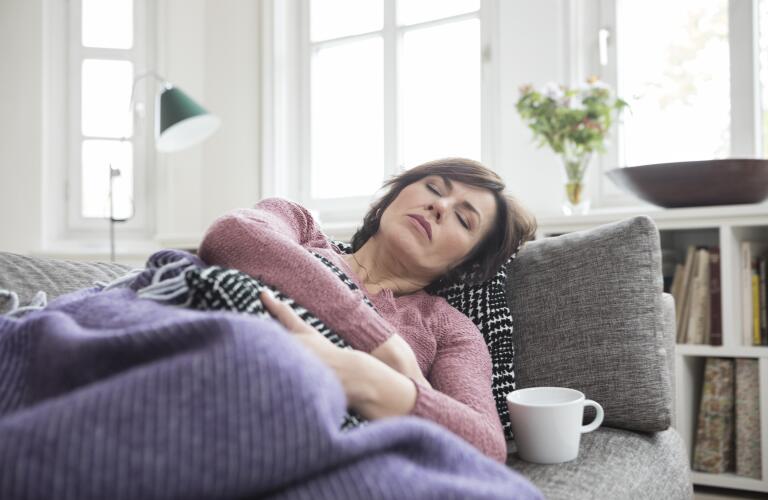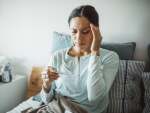
A diagnostic lab test that determines whether or not an individual is infected with SARS-CoV-2—the novel coronavirus that causes COVID-19—is helping to manage resources for patients at greatest risk from COVID-19. Coronavirus testing also helps track virus spread.
If you develop cough, fever, shortness of breath, or other flu-like symptoms after recent exposure to an individual known to have COVID-19, your doctor may recommend testing. Here’s what to expect with testing, and what to do if you test positive for the new coronavirus. (See the list of no-cost community testing sites by state, according to U.S. Department of Health and Human Services, or HHS.)
For the most frequently administered COVID-19 test, it takes 2 to 5 days to get the test result from the time your sample is collected. Once a healthcare provider collects your test sample—using a nasal or throat swab—you will be responsible for your own care unless you are already hospitalized. The doctor who ordered the test will contact you with the results.
If you have symptoms consistent with an acute upper respiratory infection (which could be COVID-19, the flu, the common cold, or some other respiratory infection), you should isolate yourself at home and not leave the house unless you have been instructed to visit a healthcare facility.
If you do not have symptoms, you should still isolate or at least quarantine and practice social distancing—maintaining at least 6 feet separation from others—until you get your test results. You can test positive for coronavirus without symptoms, and spread the virus to others. Symptoms develop within 2 to 14 days after exposure; the median is 5 days. If you test negative during your quarantine time, you may end quarantine after 7 days as long as you do not experience symptoms by daily monitoring, according to the Centers for Disease Control and Prevention (CDC).
Have you received notification that you tested positive for the virus that causes COVID-19? There is no reason to panic. Most individuals who are not at increased risk for severe COVID-19 illness typically experience a flu-like episode and fully recover.
If you test positive for COVID-19, you should:
- Isolate yourself at home and do not leave the house unless you have been instructed to visit a health care facility. (Per the CDC, you can end home isolation if these three conditions are met: It has been at least 10 days since you first experienced symptoms, you have been fever-free for 24 hours without fever-reducing medicine, and your symptoms are improving. If you do not experience symptoms, you may be around others 10 days after your test date.)
- Wear a disposable face mask to protect others from contaminated respiratory droplets that enter the air when you cough or sneeze.
- Stay in a separate room with a separate bathroom, if possible.
- Maintain at least 6 feet distance from others.
- Keep all high-touch surfaces clean. This includes doorknobs, tabletops, telephones, and even your computer and keyboard.
- Limit contact with housemates, especially those who are at increased risk of severe COVID-19 illness (elderly or immunocompromised individuals and those with respiratory problems).
Among the most effective practices that limit the spread of COVID-19 is practicing good ‘respiratory etiquette’ and hand hygiene:
- Avoid touching your eyes and mouth.
- Dispose of tissues after coughing or sneezing.
- Wash your hands regularly and thoroughly with warm, soapy water for 20 seconds. Use alcohol-based hand sanitizer in a pinch, if soap and water are not available.
If you are older than 65, or you are immunocompromised or have an underlying chronic health condition, you have a higher risk of developing more severe COVID-19 illness. Follow the same practices as everyone else, closely monitor your symptoms, and seek medical care if your symptoms worsen. For mild-to-moderate COVID-19 illness in at-risk individuals, the U.S. Food and Drug Administration has approved two different types of biologic drugs to help prevent more serious disease.
As a courtesy and as an important step in controlling the pandemic, try to notify the people with whom you have been in contact over the past 7 to 10 days.
The same type of home care you would use for cold or flu symptoms also works for most patients infected by SARS-CoV-2. [For pain relief and fever reduction with coronavirus, there are some reports to avoid ibuprofen (Advil, Motrin) and use acetaminophen (Tylenol) instead, but there is no scientific evidence to support the claim.]
But, severe COVID-19 illness extends beyond cough, fever and congestion. Immediately notify your healthcare provider for any of the following symptoms:
- Difficulty breathing (having a hard time “catching” your breath)
- Bluish lips/skin (cyanosis)
Start a journal to record your temperature readings. Measure your temperature more frequently if fever occurs. Note the dates when symptoms emerge, their severity, and their resolution. This is powerful information to share with your healthcare team as they track your progress or in case complications ensue. You can expect to remain in isolation until any fever has resolved for at least 24 hours without taking a fever-reducing medicine and with steady improvement in your other symptoms.
Give yourself the time and space to completely recover, which takes a few days to a week in most cases of COVID-19. Reach out to friends and family and other support groups. Get more wellness tips during social distancing.






